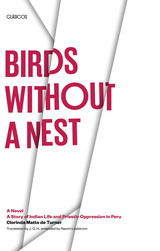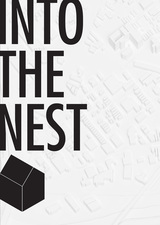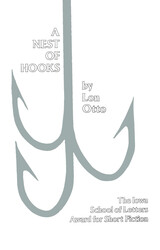
"I love the native race with a tender love, and so I have observed its customs closely, enchanted by their simplicity, and, as well, the abjection into which this race is plunged by small-town despots, who, while their names may change, never fail to live up to the epithet of tyrants. They are no other than, in general, the priests, governors, caciques, and mayors." So wrote Clorinda Matto de Turner in Aves sin nido, the first major Spanish American novel to protest the plight of native peoples.
First published in 1889, Birds without a Nest drew fiery protests for its unsparing expose of small town officials, judicial authorities, and priests who oppressed the native peoples of Peru. Matto de Turner was excommunicated by the Catholic Church and burned in effigy. Yet her novel was strongly influential; indeed, Peruvian President Andres Avelino Caceres credited it with stimulating him to pursue needed reforms.
In 1904, the novel was published in a bowdlerized English translation with a modified ending. This edition restores the original ending and the translator's omissions. It will be important reading for all students of the indigenous cultures of South America.

The beauty of the robin’s egg is not lost on the child who discovers the nest, nor on the collector of nature’s marvels. Such instances of wonder find fitting expression in the photographs of Rosamond Purcell, whose work captures the intricacy of nests and the aesthetic perfection of bird eggs. Mining the ornithological treasures of the Western Foundation of Vertebrate Zoology, Purcell produces pictures as lovely and various as the artifacts she photographs. The dusky blue egg of an emu becomes a planet. A woodpecker’s nest bears an uncanny resemblance to a wooden shoe. A resourceful rock dove weaves together scrap metal and spent fireworks. A dreamscape of dancing monkeys emerges from the calligraphic markings of a murre egg.
Alongside Purcell’s photographs, Linnea Hall and René Corado offer an engaging history of egg collecting, the provenance of the specimens in the photographs, and the biology, conservation, and ecology of the birds that produced them. They highlight the scientific value that eggs and nest hold for understanding and conserving birds in the wild, as well as the aesthetic charge they carry for us.
How has evolution shaped the egg or directed the design of the nest? How do the photographs convey such infinitesimal and yet momentous happenstance? The objects in Egg & Nest are specimens of natural history, and in Purcell’s renderings, they are also the most natural art.



Amie Whittemore’s Nest of Matches is a lavish declaration of the beauty of the natural world, queer identity, and of the imagination set free. Whittemore’s third collection explores the complexities of love—romantic, familial, and love for place—and wonders at cycles of life, finding that: “Every habit / even love—strangest / of them all—offers exhaustion / and renewal.” Moving seamlessly from meditations on the moon’s phases to explorations of dream spaces to searches for meaning through patterns of love and loss, Whittemore’s work embodies the mysteries of dichotomies—grief and joy, consciousness and unconsciousness, habit and spontaneity—and how they coexist to create our identities. Throughout the collection, Whittemore reveals how interior nature manifests into exterior habits and how physical landscapes shape the psyche.
READERS
Browse our collection.
PUBLISHERS
See BiblioVault's publisher services.
STUDENT SERVICES
Files for college accessibility offices.
UChicago Accessibility Resources
home | accessibility | search | about | contact us
BiblioVault ® 2001 - 2024
The University of Chicago Press









